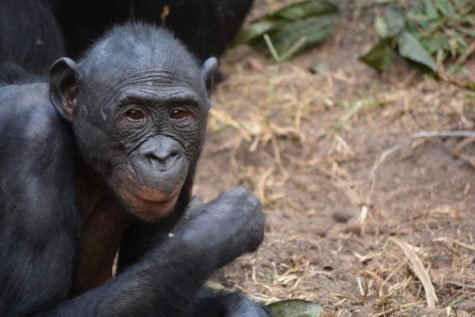
WASHINGTON — While common chimpanzees and bonobos are considered the closest ancestors to the human species, a new study finds that bonobos — an endangered species with a different social order and slightly varied physical features from chimps — may actually be our more closely connected cousin anatomically after all.
Researchers at George Washington University examined seven bonobos from the Antwerp Zoo in Belgium that had died, but were being preserved. Previous studies had used DNA to differentiate between bonobos and chimpanzees, concluding that they share about 99.6% of the same DNA, while humans share about 99% of our DNA with both species. The GW team was the first to look at difference in musculature of all three species.

“Bonobo muscles have changed least, which means they are the closest we can get to having a ‘living’ ancestor,” says Bernard Wood, professor of human origins at the GW Center for the Advanced Study of Human Paleobiology, in a university news release.
Wood explained that his team determined the muscles of a bonobo are more similar to the anatomy of humans, while chimpanzees evolved more significantly. It's believed that chimpanzee and bonobo lineages split about 2 million years ago, allowing each species to develop different physical and behavioral traits.
“In addition, our study has shown that there is a mosaic evolution of the three species, in the sense that some features are shared by humans and bonobos, others by humans and common chimpanzees, and still others by the two ape species,” says Rui Diogo, lead author of the paper and associate professor of anatomy at Howard University. “Such a mosaic anatomical evolution may well be related to the somewhat similar molecular mosaic evolution between the three species revealed by previous genetic studies: each of the chimpanzees species share about 3 percent of genetic traits with humans that are not present in the other chimpanzee species.”
The study's findings were published in the open access journal Scientific Reports earlier this month.











Nevertheless, they didn't make it and we did.
Didn't make it....what is it? Seeing how all three species are alive today, I would say that all three species are evolutionarily ‘successful'.
Actually that's true since the “goal” is survival.
They didn't become capable of curing disease, flying to the Moon, raising food on huge farms, understanding DNA, etc., which have made us survive and prosper.
Their survival now depends in part on us.
However, that wasn't a goal or purpose, survival is.